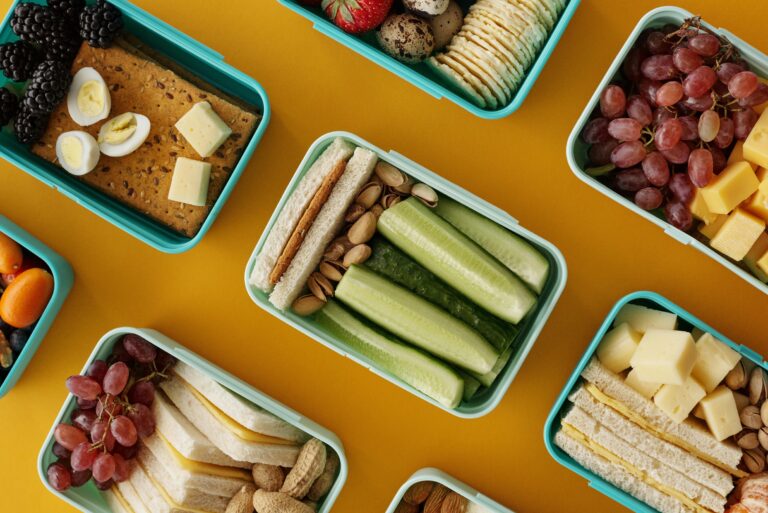There is a growing demand for overseas food brands in China
Food imports into China exceed 60 billion dollars. In 2017, China imported 61.65 billion dollars worth of food, indicating a rise of 11.1% compared to 2016. The biggest Chinese imports were meat, dairy, and seafood. The meat was valued at 9.5 billion dollars with dairy and seafood valued at 9.3 billion and 8.5 billion dollars, respectively. There were also increases in growth in imported foods into Сhina in other sectors such as tea and nuts. At the 2018 Boao Forum for Asia Annual Conference, China announced measures to reduce tariffs and expand imports meaning larger import numbers will be seen in the near future. Chinese Customs also strives to strengthen surveillance to ensure the quality of freshness of Chinese imports. The overall demand for imported goods in China in 2018 has increased as the standard of living in China has improved, and Chinese consumers display a higher degree of willingness to buy more imported goods.
Increasing demand for imported goods in China
The increase in demand for imported goods in China is not beyond that of a few factors. The driving factors for Chinese consumers involve quality, convenience, and experience. Consumers no longer hold the thought that foreign goods are only quality goods and take into consideration convenience and the experience they will gain from the product when selecting which imported goods they will buy. The variety and exoticness of imported food in China shows to be of growing importance within the food market because it provides a different experience for the consumer. Another factor is the increasing development of cross-border e-commerce channels. These channels, or e-commerce platforms, make buying imported goods in China more convenient and efficient, especially imported food. An increase in the health consciousness of Chinese consumers has also given rise to a health food trend. Health foods are food products that have specific health functions or minerals and supplement vitamins. The health food trend shows thatChinese consumers are changing their eating habits to avoid health issues and things like a high-fat diet. This has led to an interest in organic and plant-based foods, additive-free food, and functional health food. Seafood is a favorite among food imports into China because they are attractive to health conscious Chinese consumers for having heart health and improved functionality of the brain and nervous systems benefits. Imported seafood is not only often considered as more nutritious, but also safer due to water quality and strict quality control. The best selling imported organic foods are pork, beef, oil, and fresh milk. Overall, the biggest food imports were meat, dairy, and seafood.
Chinese consumer perception of overseas food brands in China
Chinese consumers are exhibiting a higher willingness to import and purchase foreign consumer goods. For overseas food brands in China, consumers focus on safety, price, and ingredients. Chinese consumers have gradually moved from the notion that foreign goods are only quality goods to selecting which imported goods in China to buy by taking into consideration factors such as safety, raw material quality, and design. Safety predominantly refers to food. In recent years, China has encountered some food safety problems, which has affected the perception of domestic food brands. From these occurrences, food imports into China are trusted more than domestic products as they are verified as ‘safe’ through the inspection process and are subject to strict quality control.
Chinese consumers’ perceptions of food imports by country
North America: United States of America, Canada
What Chinese consumer think of American Food
Compiled from data collected on Zhihu and Weibo, Chinese consumers of American food perceives it as:
- Fast food
- Monotonous
- Unhealthy
- Genetically modified
- Has large portion sizes
American Food in Shanghai, China
Utilizing local restaurant, hotel, and shop locating service Dianping, we can see that there are over 15 American restaurants in Shanghai. This indicates that American food has a foundation in Shanghai. Within the American restaurants rated through the service, more than 50 percent of them are located in Puxi. Multitudinous American fast food restaurants such as McDonald’s, KFC, and Burger King, also line the streets and alleys of Shanghai.
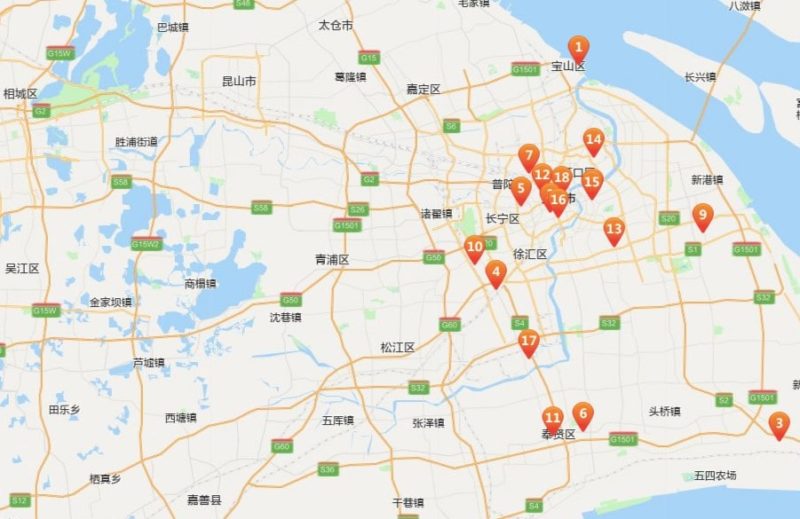
American food promotions in China
In the eyes of Chinese consumers, American food is associated with fast food. Coincidentally, American fast food chains thrive in China. These restaurants, more than others, carry out promotions of American food in through digital platforms. Firstly, American fast food restaurants like KFC and Pizza Hut uses platforms such as Weibo to promote in-store deals, new releases, and general items on the menu. This form of digital advertisement is joined by display ads in commercial areas and among other platforms.
Restaurants also like to make use of KOLs. KFC works with celebrities such as singer LuHan, actor 朱一龙 (Zhu Yi Long), and singer 王俊凯 Wang Jun Kai, also known as Karry Wang) for various commercials and promotional materials. They use these individuals to gain the attention of various consumers. These commercials and ads featuring KOLs are played across every digital platform, including streaming platforms like Youku and iQiyi.

Other types of restaurants generally do not use KOLs for promotion and use traditional ways of advertising or commercials that feature mainly the product and not KOLs.
Chinese consumers’ perception of Canadian food
Compiled from data collected on Zhihu and Weibo, Chinese consumers of Canadian food perceives it as:
- Healthy
- Inexpensive
- Simple
- Sweet
Canadian food in Shanghai, China
In Shanghai, it seems that Canadian food does not have a well-established foundation. According to Dianping, there are very little Canadian restaurants. The number of restaurants present amounts to less than 10. Among these restaurants, the majority are in Puxi.
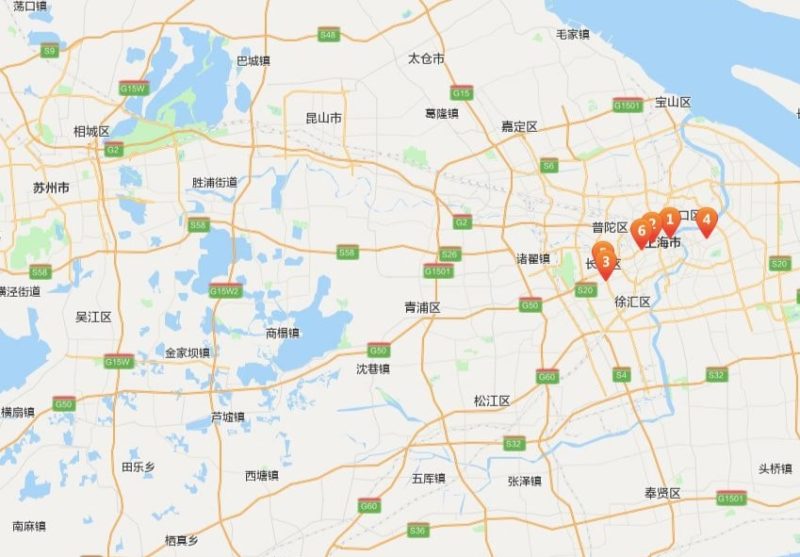
Canadian food promotions in China
As Canadian food has yet to have an established foundation in Shanghai, promotional content on Chinese digital platforms for its cuisines are hardly seen for restaurants. However, on Weibo, there are specialty Canadian food brands that have accounts specifically for the promotion of products such as health food.
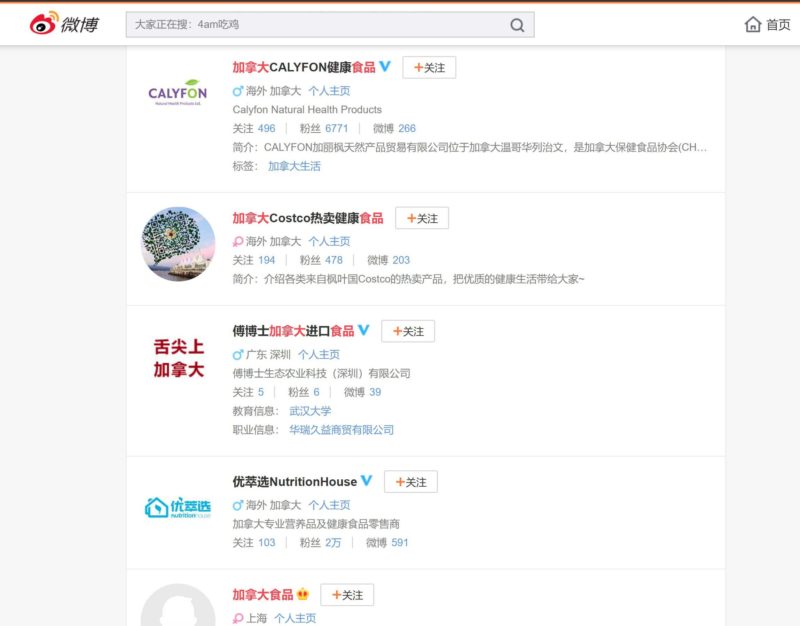
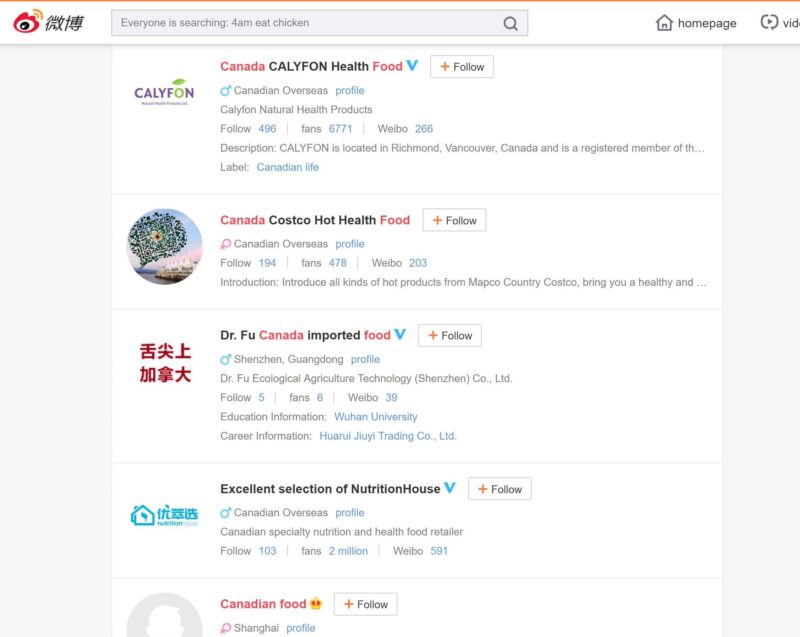
These companies do not use other forms of promotion, such as KOLs. This is likely due to being small in size and have little presence in China. Once Canadian food starts to establish a good foundation in China, we may see more digital promotions for its food and the utilization of KOLs in its promotion.
South America: Brazil
What Chinese consumer think of Brazilian food
Compiled from data collected on Zhihu and Weibo, Chinese consumers of Brazilian food perceives it as:
- Unique
- Delicious
- Sweet and salty
- Healthy
Brazilian food in Shanghai, China
Brazilian food is no stranger to individuals living in Shanghai. There are over 50 Brazilian restaurants listed on Dianping. This shows that Brazilian food has a well-established foundation in Shanghai. Among the top 20 restaurants, many have an average rating of 3 to 4 ½ stars.
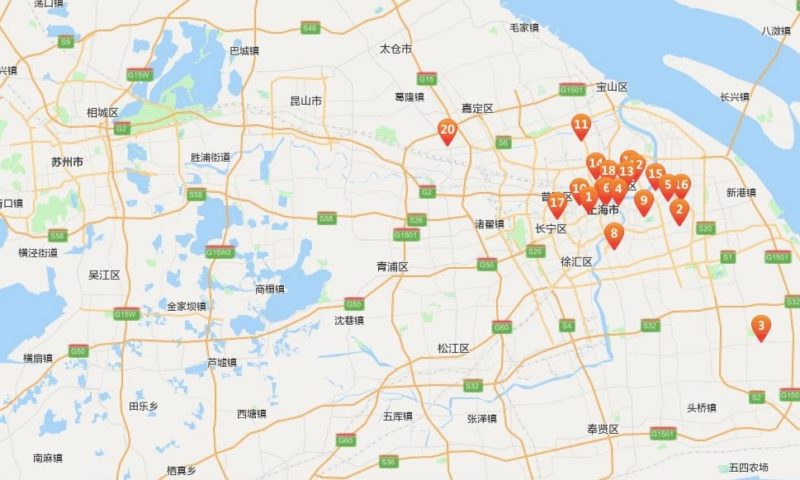
Brazilian food promotions in China
Multiple Brazilian restaurants in China use digital platform promotions. On Weibo, there are accounts for various kinds of Brazilian restaurants. 巴西烤肉(Brazilian Barbeque), for example, seems to be a favorite among Chinese consumers. Many Brazilian Barbeque restaurants in China’s large cities have a Weibo account. These restaurants do not utilize any KOLs for promotion. The accounts seem to promote the services the restaurants provide, such as events or catering, and the food which is often photographed in an organized, artistic, or elegant way. But these accounts do not look to be very active, meaning that this form of digital promotion may not be highly utilized even though there are many accounts. This may be the same case for other types of restaurants.
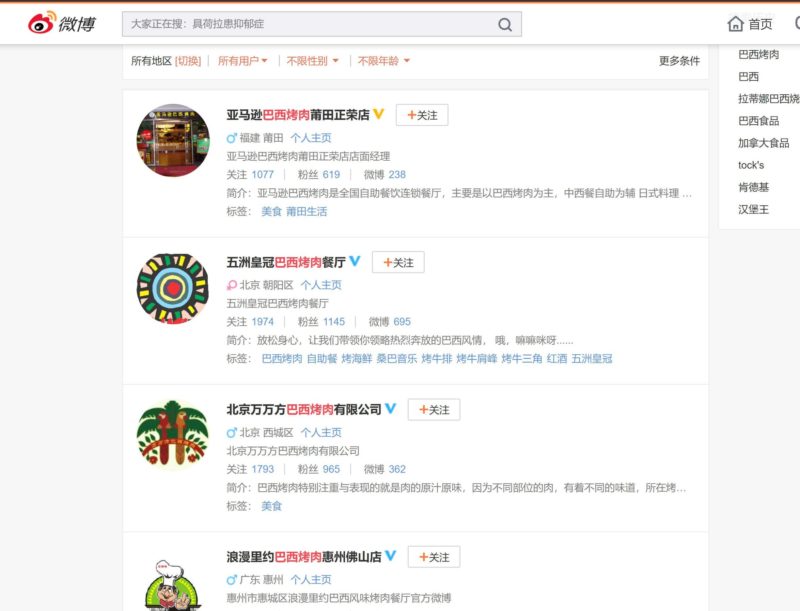
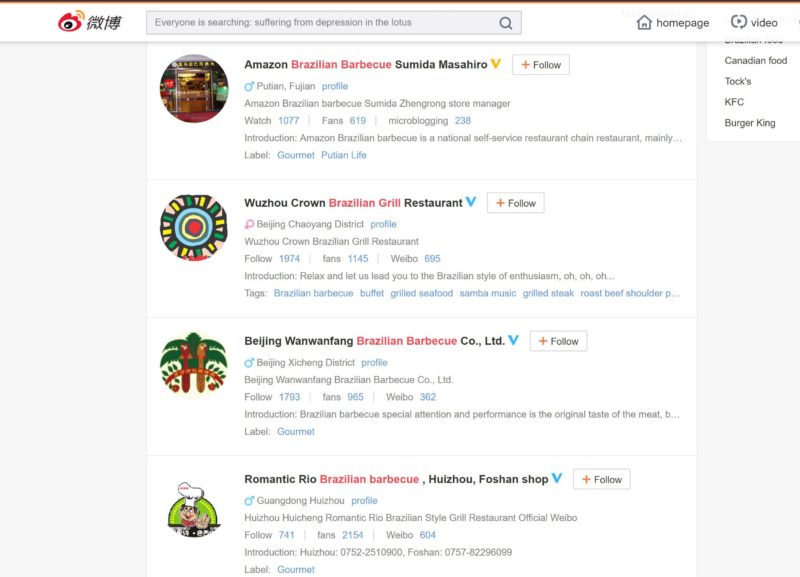
Oceania: Australia, New Zealand
Chinese consumers’ perception of Australian food
Compiled from data collected on Zhihu and Weibo, Chinese consumers of Australian food perceives it as:
- Unique
- Delicious
- Rich seafood
- Multicultural
- Have rich and fresh ingredients
- Reasonably priced
- High in calories
Australian food in Shanghai, China
Just like Brazilian food, Australian food has a well-established foundation in China. Dianping reports more than 50 Australian restaurants resides in Shanghai with “澳大利亚” or “澳洲” in their name and/or description. Most of these restaurants are in Puxi. Among the top 20 restaurants, there is an average rating of 3 ½ stars or more.
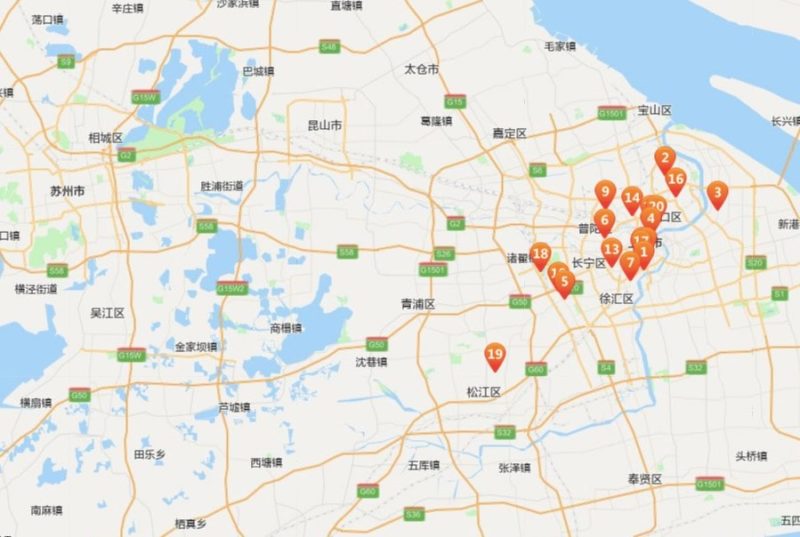
Australian food promotions in China
Like Canadian food, Australian Food companies in the health food aspect of the food and beverage market have accounts on digital platforms rather than specific restaurants associated with the terms “澳大利亚食品” and “澳洲食品”. Along with these accounts, Australian food producers and food information accounts exist.

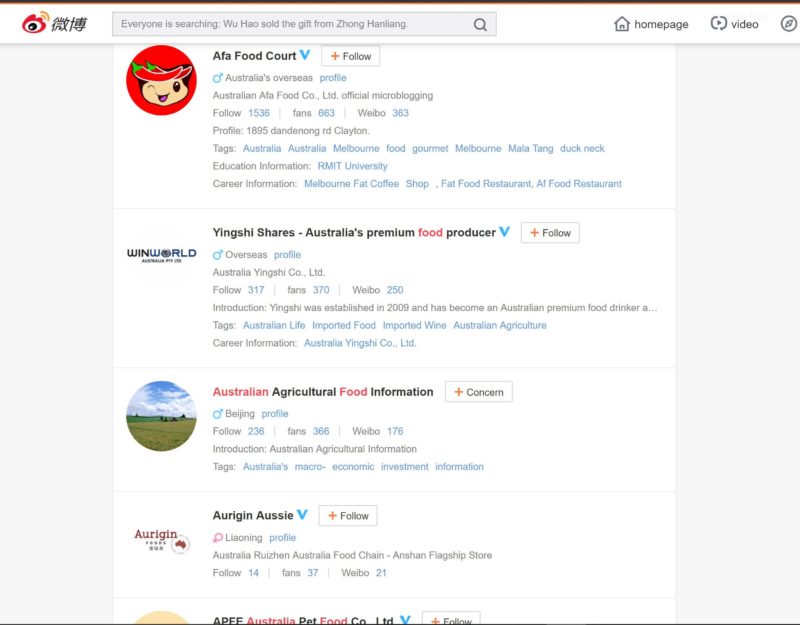
These accounts promote the quality of the products associated with the account and informational content (e.x. health food brand accounts promotes the freshness of their health food product and the benefits of the product) without the use of KOLs. Similar to the Brazilian Barbeque accounts, most of these accounts are now inactive as well.
Chinese consumers’ perception of New Zealand food
Compiled from data collected on Zhihu and Weibo, Chinese consumers of New Zealand food perceives it as:
- Delicious
- High-quality milk and meat
- Fresh and rich, especially seafood
- Expensive vegetables
- Reasonably priced meat
New Zealand food in Shanghai, China
New Zealand food has some form of foundation in Shanghai. On Dianping, there are approximately 27 restaurants listed. Of which, the majority are in Puxi. The top 15 restaurants have a rating of 3 stars or more.
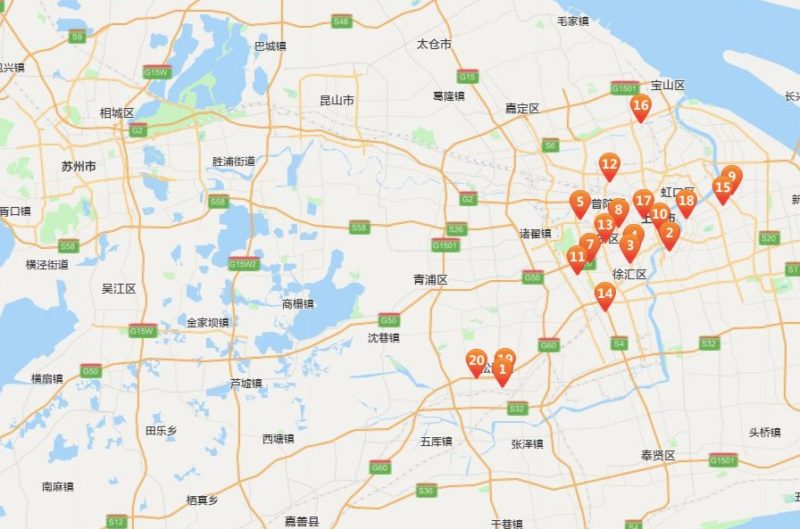
New Zealand food promotions in China
Using the terms “新西兰食品” (New Zealand food) and “新西兰餐厅” (New Zealand restaurant), no results were found on Weibo. The few accounts that appeared using 新西兰食品 were New Zealand pet food brands here in China.
Western Europe: France
What Chinese consumer think of French food
Compiled from data collected on Zhihu and Weibo, Chinese consumers of French food perceives it as:
- Delicious
- Elegant
- Has small portions
- A representative of Western food
- Like a combination of food and art
- Light taste
- Healthy
- Romantic
- Wonderful wine
French food in Shanghai, China
With over 100 restaurants listed on Dianping, it can be said that French food has a very well-established foundation in Shanghai. Restaurants receive a rating of 4 to 5 stars and are mostly located in Puxi.
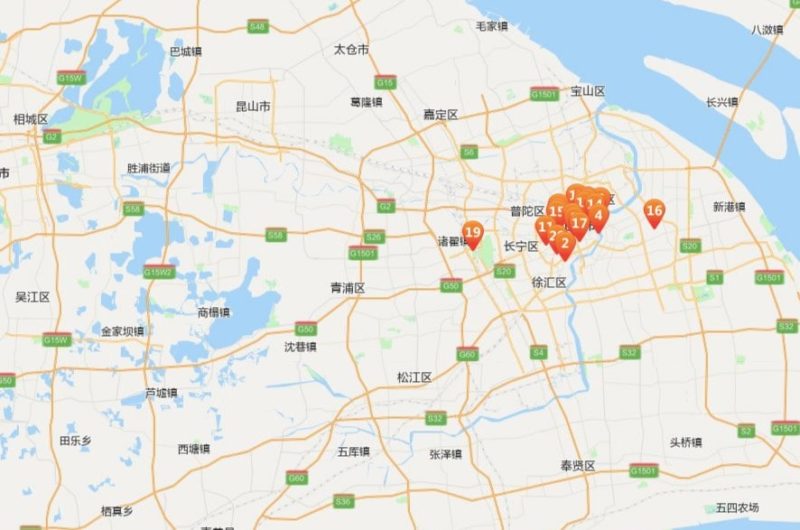
French food promotions in China
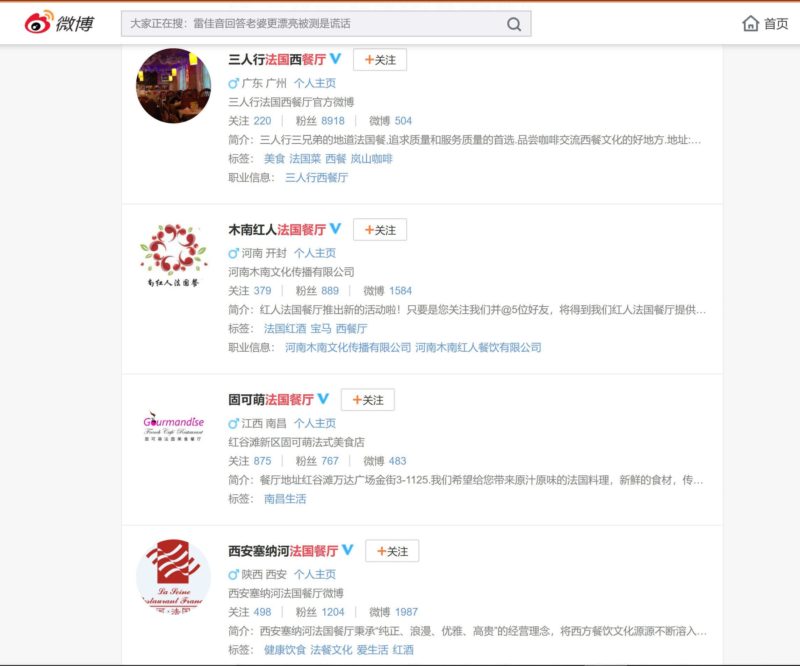
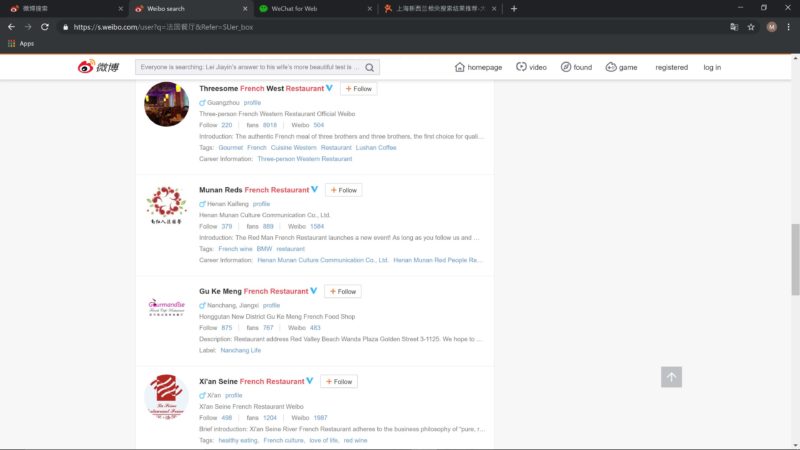
Using the term “法国餐厅” (French restaurants), multiple french restaurants appear in the search. However, these accounts have gone inactive. Other than these inactive accounts, no other French restaurants seem to use digital platforms such as Weibo for food promotions.
East Asia: Japan, South Korea
Chinese consumers’ perception of Japanese food
Compiled from data collected on Zhihu and Weibo, Chinese consumers of Japanese food perceives it as:
- Delicious
- Various tastes: sweet, spicy, salty
- Greasy
- Strong flavors
- Less variety of vegetables
- Fresh and rich
- Safe
- Wonderful snacks and desserts
Japanese food in Shanghai, China
Japanese food seems to have a well-established foundation in Shanghai. There are well over 200 restaurants listed on Dianping, most of which are listed with a rating of 4 ½ stars or more.
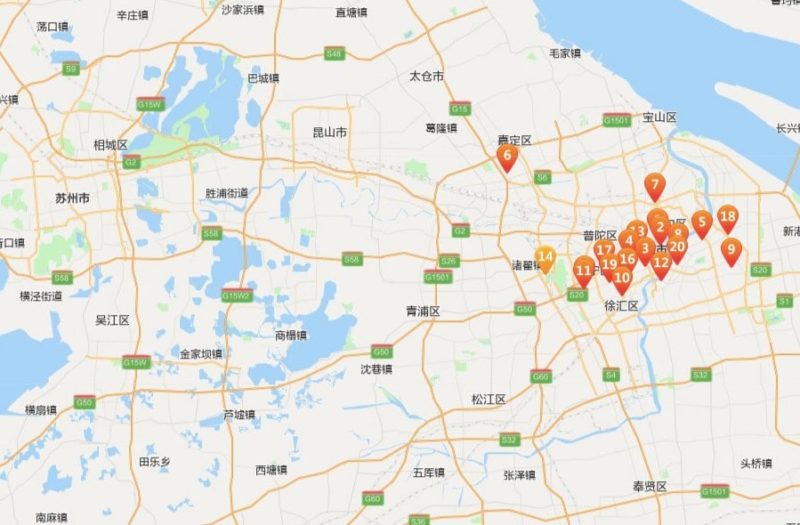
Japanese food promotions in China
From sushi to curry to ramen, various Japanese cuisines and foods are trendy in China. Ramen restaurants are particularly present on Weibo. Using the search term “日本拉面” (Japanese ramen) many ramen restaurants appear in the search.
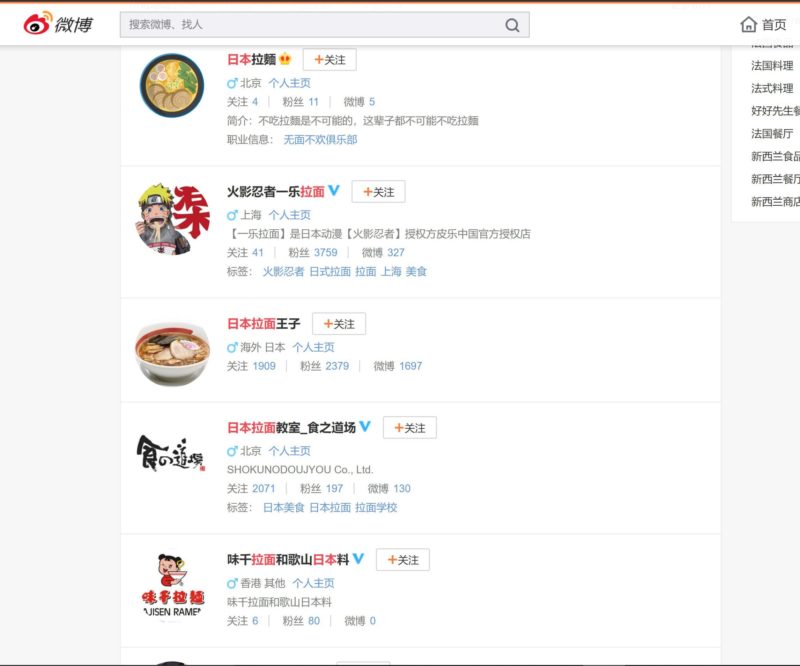

Some of these accounts are active and have good online presence through the platform. Newly opened Naruto Yen Ramen uses various promotional techniques in China. Not only does the restaurant have a promotional video covering the grand opening ceremony and posts of the ramen, but it also interacts with user-generated content (or consumer-generated content in this case) through microblogging. There seems to be no signs of use of KOLs among any of the accounts.
What Chinese consumer think of Korean food
Compiled from data collected on Zhihu and Weibo, Chinese consumers of Korean food perceives it as:
- Delicious
- Relatively simple
- Strong flavor
- Spicy
- Pickled Greasy
Korean food in Shanghai, China
Like Japanese food, South Korean food is also popular in Shanghai from Korean barbeque and cuisine restaurants to Korean Fried Chicken fast food restaurants. There are way over 200 restaurants labeled under Korean Cuisine listed on Dianping indicating that there is a stable well-established foundation for South Korean food in China. The restaurants mostly receive ratings of 4 to 5 stars.
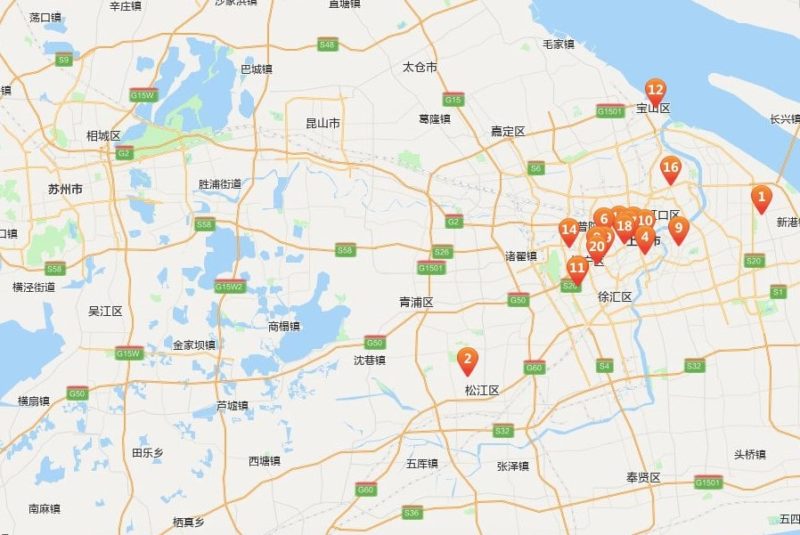
Korean food promotions in China
Korean food is not a rarity in China, and seeing Korean celebrities’ photos throughout a Korean restaurant is common. Korean restaurant chains utilize Korean Celebrities in promotional materials. For example, with Korean hot pot restaurants, Korean celebrities can be seen on display menus or ad boards that are displayed outside of the restaurant. Like American food, it seems Korean fast food restaurants such as Korean Fried Chicken chains, use digital platforms for promotions. Popular Korean Fried Chicken chain 蜜哆哆炸鸡 (Midodo Chicken) has an active Weibo account and utilizes it to promote its food products. The account features brand generated content as well as microblogs user-generated content from consumers. The chain also has its own website where you can learn about the business, contact them, inquire about services and more.
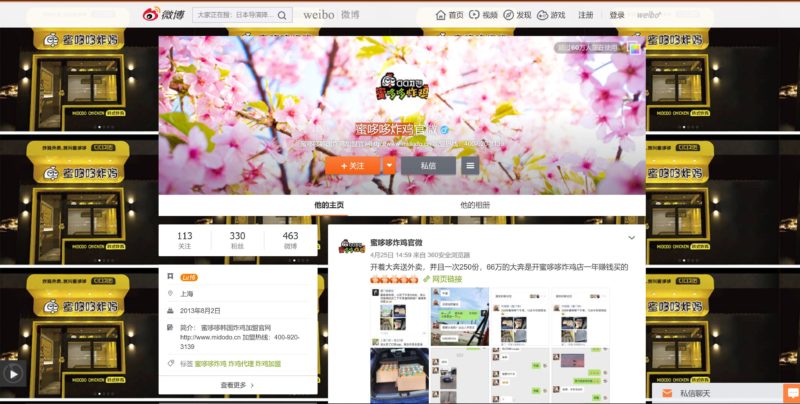
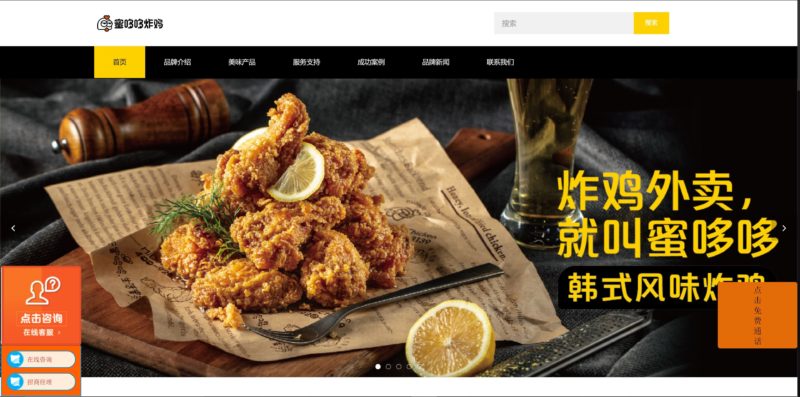
Food export to China procedures
According to information provided by HKTDC Research, there are approximately eight steps on how to export goods to China from other countries. Among these steps, you also have to obtain the proper documents for approval by their respective authorities. The first steps involve registration on the administrative level–registration of operator and with Customs– followed by an application for quotas and licenses. To import any goods to Mainland China, overseas producers must register in China. After application approval, you proceed to sign a trade contract and exchanging formalities, along with an application for commodity inspections. Lastly, you receive verification and write off formalities. Once this process is completed, you can proceed to have Chinese imports of your produce.
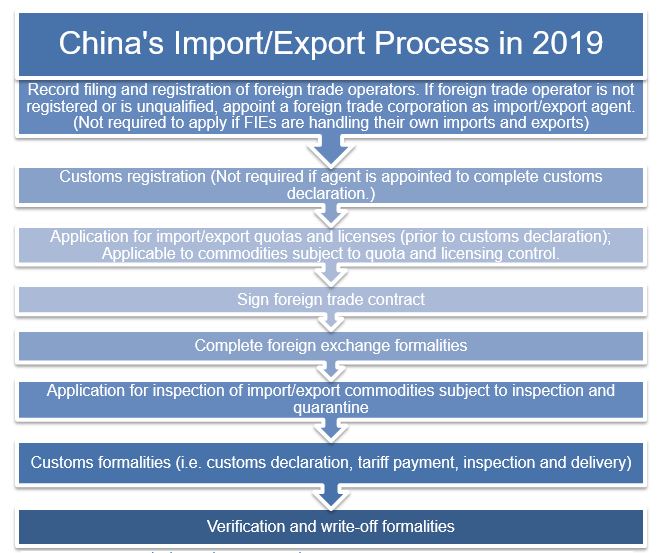
Approval information for food imports into China
For Chinese imports, some commodities are categorized as special commodities. Food products are one of those special commodities. Food products with pre-packaged food labeling require approval documents by the correct approval authorities. Prior to the import of pre-packaged food products to China, the importer or agent should apply to the designated inspection and quarantine authorities for inspection. The agent presents samples of the Chinese labels of the products and documentary proofs of contents specified together with a letter of undertaking from the enterprise concerned. Through on-site inspection and label examination, the designated inspection and quarantine authorizes will review the format of the labels and specifically inspect the batches selected. After verification of the documents, the authorities will release the imported pre-packaged foods that were not selected for inspection based on the letter of undertaking issued by the importer or agent.
Food labeling for exporting to China procedures
How to export goods to China from any country requires the presence of a Chinese food label for each and every commodity. The label should have the correct Chinese characters and be submitted to the corresponding authorities for approval before the import of the prepackaged food product.
Author: Shyaiah Mitchell
Make the new economic China Paradigm positive leverage for your business
Do not hesitate to reach out our project managers at dx@daxue-consulting.com to get all answers to your questions




